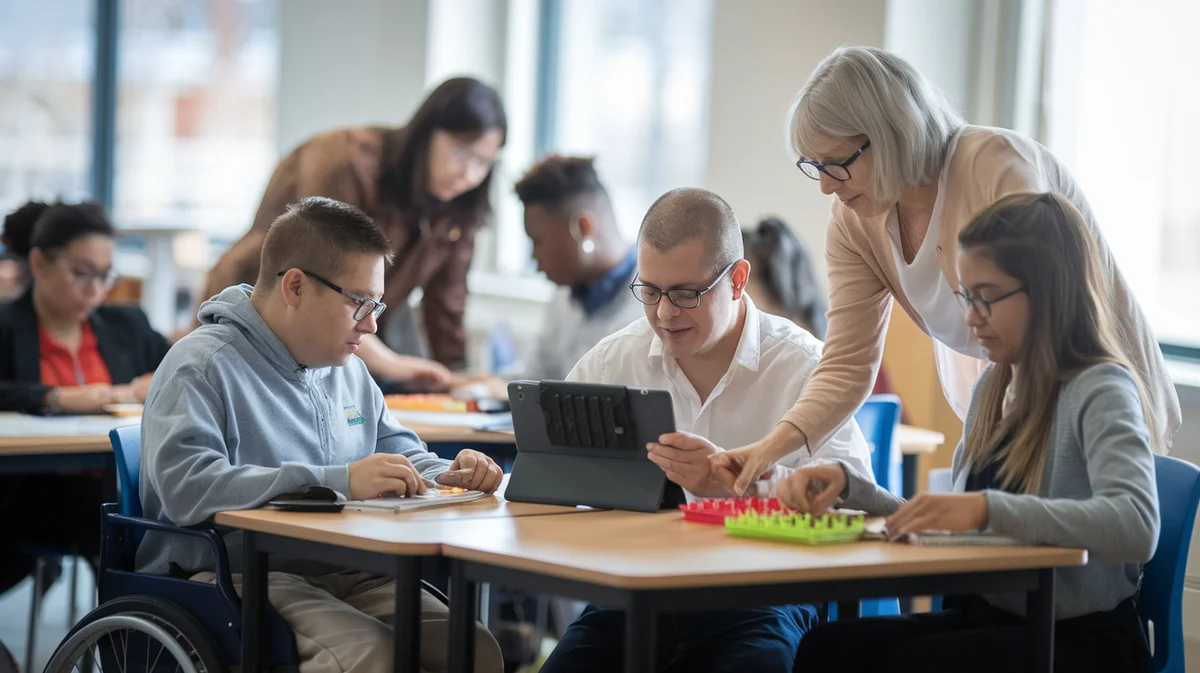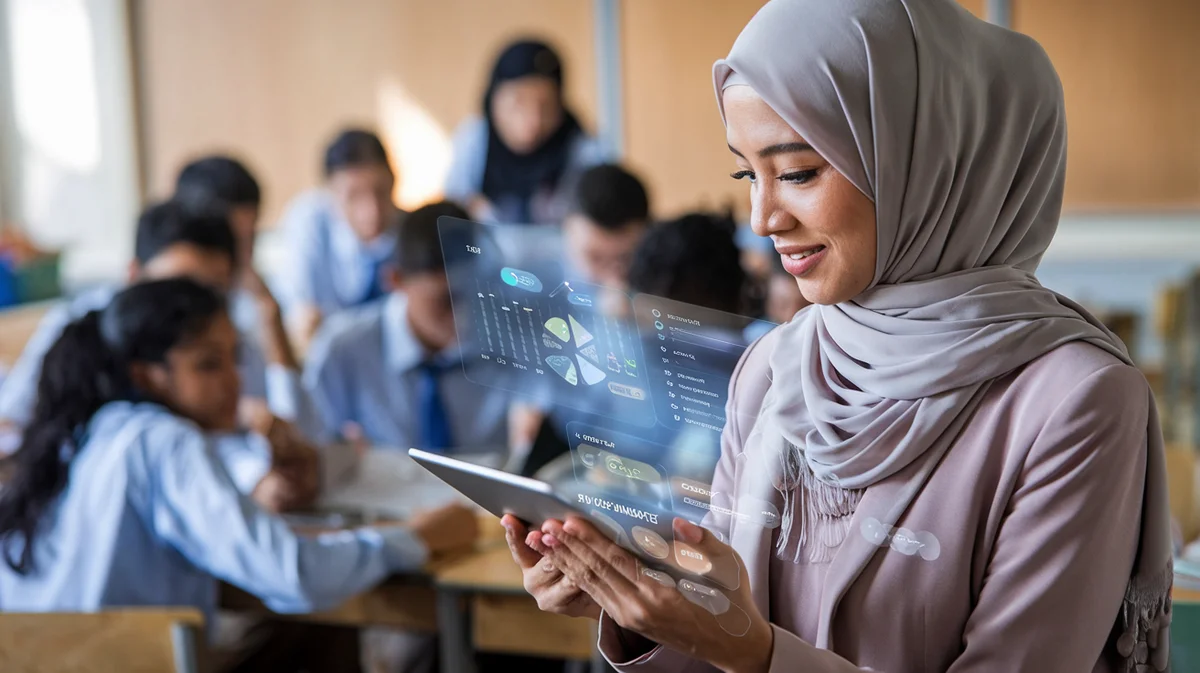Can EdTech Make Inclusion Easier? The Role of Digital Platforms in Supporting SEN Students


wp:paragraph
In today’s rapidly evolving educational landscape, the promise of inclusive education technology is more relevant — and more achievable — than ever before. As we at UNOWA continue to empower institutions, educators, and students across Europe, MENA, and CIS regions, we see firsthand how digital platforms are transforming the learning experience for students with Special Educational Needs (SEN). But can EdTech truly make inclusion easier? Let’s explore the evidence, strategies, and real-world impact shaping the future of inclusive education.
/wp:paragraph
wp:heading {"level":2}
The Expanding Role of EdTech in Inclusive Education
/wp:heading
wp:paragraph
The global EdTech market is projected to reach $598.82 billion by 2032, growing at over 17% annually. This surge reflects not only a technological revolution but also a fundamental shift in how education systems approach diversity and inclusion. Education itself is a $7 trillion+ industry, accounting for more than 6% of global GDP, underscoring the scale and potential impact of EdTech on inclusive education (HolonIQ).
/wp:paragraph
wp:heading {"level":3}
What Makes Digital Platforms Transformative for SEN Students?
/wp:heading
wp:paragraph
Personalization and Accessibility: Digital platforms allow for tailored learning experiences. AI-driven tools can adapt content to individual learning profiles, while assistive technologies — such as text-to-speech, speech recognition, and augmented reality (AR) — make abstract concepts more tangible and accessible. For example, AR can help students with dyslexia visualize language structures, and AI can scaffold lessons for students with autism spectrum disorders.
/wp:paragraph
wp:paragraph
Customization for Diverse Needs: Our inclusive education technology solutions, such as MIKKO, are designed to support students from diverse backgrounds and with varying abilities. Customizable interfaces, adjustable font sizes, and multi-sensory content ensure that every learner can engage meaningfully with the curriculum.
/wp:paragraph
wp:paragraph
Teacher Empowerment: Technology is only as effective as the educators who use it. That’s why we prioritize comprehensive teacher training and ongoing professional development. Equipping teachers with the skills and confidence to integrate EdTech into their classrooms is essential for sustainable, large-scale impact.
/wp:paragraph
wp:heading {"level":2}
Key Insights and Best Practices for Implementation
/wp:heading
wp:heading {"level":3}
1. Participatory Design
/wp:heading
wp:paragraph
Involving educators, students, and families in the design and selection of EdTech tools ensures that solutions are relevant, culturally sensitive, and truly meet the needs of SEN learners. This participatory approach is central to our development process at UNOWA.
/wp:paragraph
wp:heading {"level":3}
2. Intersectional and Scalable Solutions
/wp:heading
wp:paragraph
Inclusive education technology must account for factors such as gender, geography, and socioeconomic status. In regions with limited resources, scalable solutions — like cloud-based platforms and mobile learning — can bridge gaps in access and quality. Our platforms are designed to be adaptable to national standards and scalable for large-scale deployment.
/wp:paragraph
wp:heading {"level":3}
3. Continuous Professional Development
/wp:heading
wp:paragraph
Ongoing training is critical. Teachers need support not only in using new technologies but also in adapting pedagogical strategies for inclusive classrooms. We offer tailored training modules and analytics to help educators track progress and refine their practice.
/wp:paragraph
wp:heading {"level":3}
4. Data-Driven Decision Making
/wp:heading
wp:paragraph
Analytics and feedback loops enable educators and administrators to monitor student progress, identify barriers, and make informed decisions. This data-driven approach is at the heart of our commitment to continuous improvement and measurable impact.
/wp:paragraph
wp:heading {"level":2}
Regional Perspectives: EU, MENA, and CIS
/wp:heading
wp:heading {"level":3}
European Union
/wp:heading
wp:paragraph
The EU leads with robust regulatory frameworks such as the European Accessibility Act and the Digital Education Action Plan, both of which encourage accessible digital learning and teacher training. However, implementation varies across member states, highlighting the need for cross-border collaboration and knowledge sharing (European Commission).
/wp:paragraph
wp:heading {"level":3}
MENA Region
/wp:heading
wp:paragraph
Countries like Saudi Arabia, UAE, and Qatar are investing heavily in national EdTech strategies and digital infrastructure. Public-private partnerships and scalable solutions are key to overcoming resource gaps and ensuring localized content for SEN students (UNESCO MENA).
/wp:paragraph
wp:heading {"level":3}
CIS Countries
/wp:heading
wp:paragraph
Digital transformation policies and pilot projects are underway in Kazakhstan, Uzbekistan, and Armenia. While infrastructure disparities remain a challenge, regional knowledge sharing and targeted teacher training are driving progress (World Bank Education in CIS).
/wp:paragraph
wp:heading {"level":2}
Challenges and Opportunities
/wp:heading
wp:paragraph
Despite rapid progress, significant disparities persist in EdTech adoption and effectiveness, especially across different types of disabilities and regions. The COVID-19 pandemic accelerated digital transformation but also exposed the digital divide. Moving forward, the focus must be on:
/wp:paragraph
wp:list
- Bridging infrastructure gaps in low- and middle-income regions.
- Ensuring resource allocation for teacher training and support.
- Developing contextually relevant content that resonates with local cultures and languages.
/wp:list
wp:quote
“Emerging technologies such as AI and AR can significantly enhance the inclusive educational experience, but their success depends on adequate teacher training and participatory design.” — Lynch et al., 2024
/wp:quote
wp:quote
“Customization and accessibility are at the heart of inclusive EdTech, but we must address resource scarcity and ensure that solutions are scalable and contextually relevant.” — Salas-Pilco et al., 2022
/wp:quote
wp:heading {"level":2}
Policy and Regulation: Setting the Stage for Success
/wp:heading
wp:heading {"level":3}
EU
/wp:heading
wp:paragraph
The European Accessibility Act mandates accessible digital content and services, while the Digital Education Action Plan sets ambitious targets for digital literacy and teacher training. These frameworks provide a strong foundation for inclusive education technology but require consistent implementation and monitoring.
/wp:paragraph
wp:heading {"level":3}
MENA and CIS
/wp:heading
wp:paragraph
Governments are increasingly recognizing the importance of inclusive education and digital transformation. National strategies are being developed, but challenges remain in infrastructure, teacher preparedness, and research. International collaboration and investment are essential for sustained progress.
/wp:paragraph
wp:heading {"level":2}
How We Empower Inclusive Education
/wp:heading
wp:paragraph
At UNOWA, we are at the forefront of developing and delivering complete educational systems that are inclusive, adaptable, and future-ready. Our solutions — ranging from MIKKO for inclusive education to Ulabs for STEM innovation — are designed to:
/wp:paragraph
wp:list
- Empower educators with training, analytics, and support.
- Enable institutions to implement inclusive education at scale.
- Transform learning experiences for all students, regardless of ability.
/wp:list
wp:paragraph
With over 15 years of experience and more than 300 national projects delivered, we are committed to shaping the future of education through innovation, partnership, and compassion. Learn more about our mission and solutions at UNOWA.
/wp:paragraph
wp:heading {"level":2}
Frequently Asked Questions (FAQ)
/wp:heading
wp:heading {"level":3}
What is inclusive education technology?
/wp:heading
wp:paragraph
Inclusive education technology refers to digital tools and platforms designed to ensure that all students, including those with SEN, have equitable access to quality learning. This includes assistive technologies, AI-driven platforms, and customizable content.
/wp:paragraph
wp:heading {"level":3}
How can EdTech support SEN students?
/wp:heading
wp:paragraph
EdTech supports SEN students by personalizing learning, improving accessibility, and providing engaging, multi-sensory content. Tools like text-to-speech, AR, and adaptive learning platforms help address diverse learning needs.
/wp:paragraph
wp:heading {"level":3}
What are the main challenges in implementing inclusive EdTech?
/wp:heading
wp:paragraph
Key challenges include disparities in infrastructure, resource allocation for teacher training, and the need for contextually relevant content. Successful implementation requires collaboration, investment, and ongoing professional development.
/wp:paragraph
wp:heading {"level":3}
Are there regulations supporting inclusive EdTech?
/wp:heading
wp:paragraph
Yes. The EU’s European Accessibility Act and Digital Education Action Plan, as well as national strategies in MENA and CIS regions, provide regulatory frameworks to promote accessible and inclusive digital education.
/wp:paragraph
wp:heading {"level":3}
How does UNOWA contribute to inclusive education?
/wp:heading
wp:paragraph
We design and deliver complete educational systems — including inclusive platforms, curriculum-aligned content, and teacher training — adaptable to national standards and ready for large-scale impact. Our mission is to empower institutions, educators, and students through innovative, inclusive solutions.
/wp:paragraph
wp:paragraph
Let’s work together to transform learning experiences for the better. For more information on how our inclusive education technology can support your institution, visit UNOWA.
/wp:paragraph
wp:paragraph
References:
/wp:paragraph
wp:list
- HolonIQ: Global EdTech Market
- European Commission: Digital Education
- UNESCO MENA Education
- World Bank: Education in CIS
/wp:list








